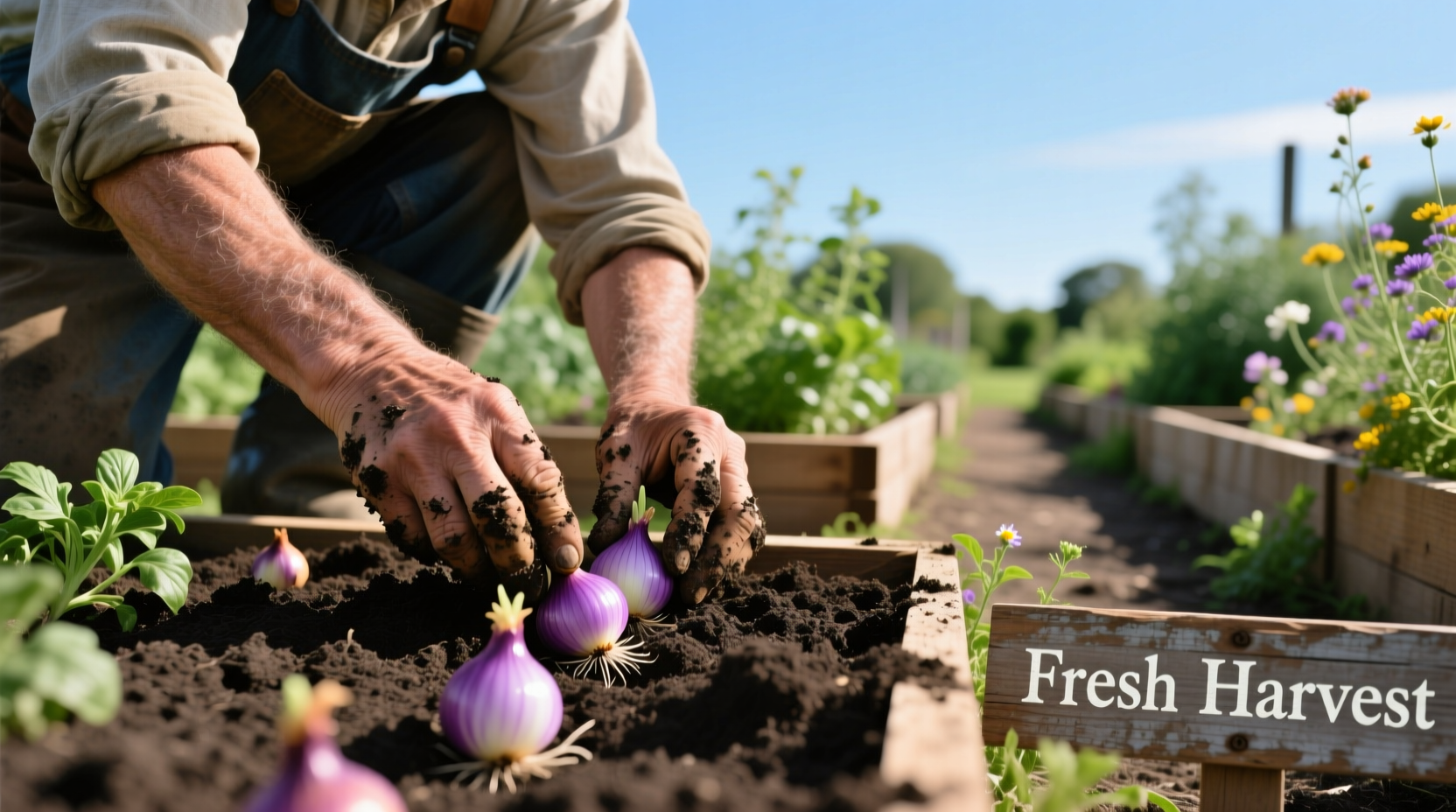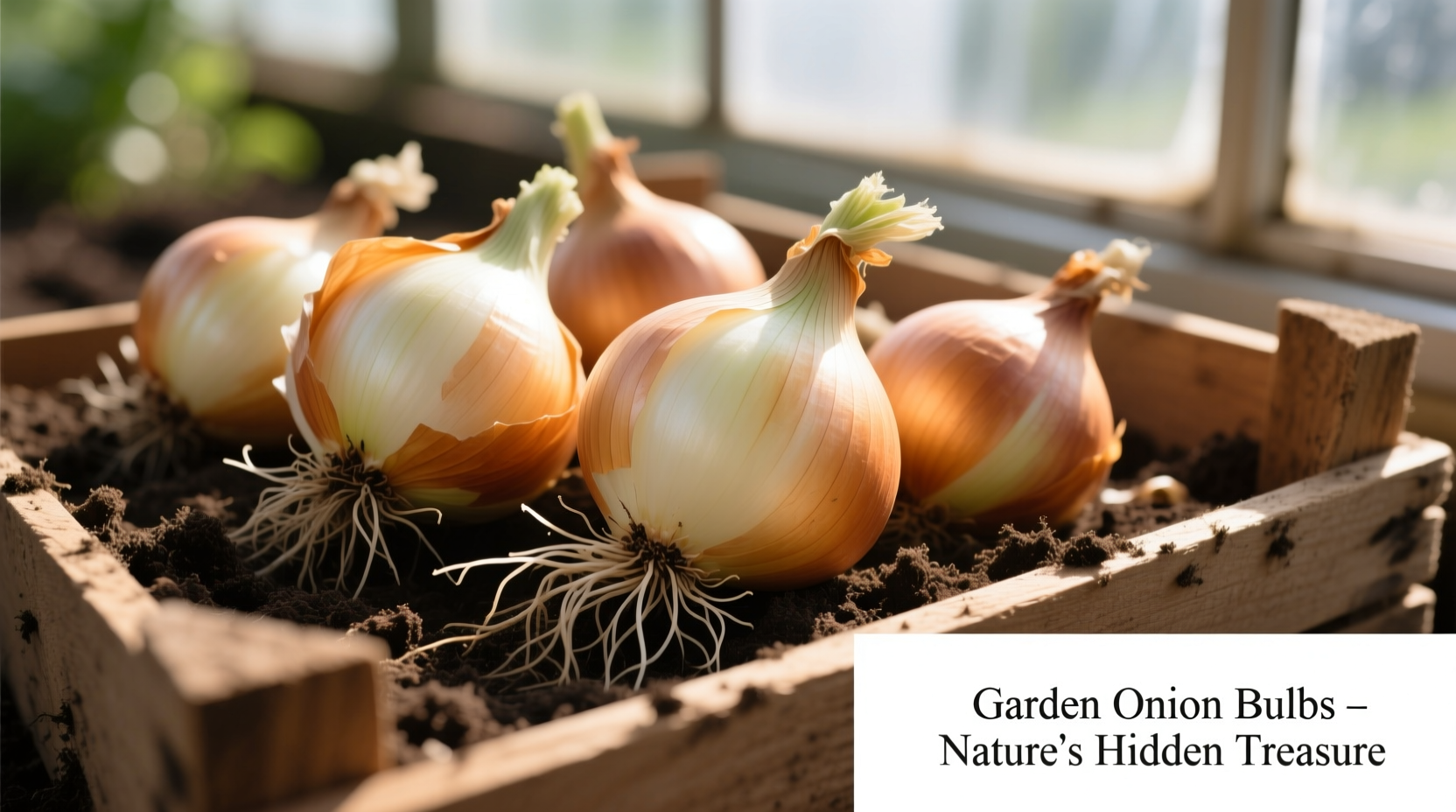Discover exactly when and how to plant onion bulbs for a bountiful harvest with this practical guide. Whether you're a first-time gardener or looking to improve your onion yields, you'll learn the optimal planting times, spacing requirements, and variety selection based on your specific climate zone—plus avoid common mistakes that lead to small bulbs or premature bolting.
Understanding Onion Bulbs: Sets vs Seeds vs Plants
Before planting, understand your options. Onion bulbs (often called sets) offer the fastest route to harvest compared to seeds or transplants. Sets are partially grown miniature bulbs that have been harvested, dried, and stored for replanting.
| Planting Method | Time to Harvest | Difficulty Level | Best For |
|---|---|---|---|
| Onion Bulbs (Sets) | 80-100 days | Beginner | Short-season climates, quick harvests |
| Seeds | 100-120 days | Intermediate | Long-season climates, specific varieties |
| Transplants | 90-110 days | Intermediate | Cold climates, precise timing |
According to the USDA Agricultural Research Service, onion sets provide the most reliable results for home gardeners in northern climates with shorter growing seasons, while southern gardeners often achieve better results with seeds started indoors.
Timing Your Planting: The Critical Factor
Planting at the wrong time is the #1 reason for poor onion harvests. Unlike many vegetables, onions respond to day length, not just temperature. Plant too early in cold, wet soil and bulbs may rot. Plant too late and you'll get small bulbs.
Planting Timeline by USDA Zone
Follow this planting schedule based on your USDA hardiness zone for optimal results:
- Zones 3-5 (Northern): Plant as soon as soil can be worked in early spring (late March to mid-April)
- Zones 6-7 (Midwest/Northeast): 4-6 weeks before last frost (mid-March to early April)
- Zones 8-10 (Southern): Fall planting (October-November) for spring harvest
The University of Minnesota Extension confirms that planting onion bulbs when soil temperatures reach 50°F (10°C) provides ideal conditions for root development without triggering premature bolting.
Step-by-Step Planting Guide
Follow these precise steps for successful onion bulb planting:
Soil Preparation (1-2 Weeks Before Planting)
Onions need loose, well-draining soil rich in organic matter. Amend your garden bed with 2-3 inches of compost worked into the top 6-8 inches of soil. Test your soil pH—onions prefer slightly acidic to neutral soil (6.0-7.0). If your soil is heavy clay, consider raised beds for better drainage.
Planting Your Onion Bulbs

Planting depth and spacing directly impact bulb size:
- Choose firm, dry bulbs without signs of mold or sprouting
- Separate bulbs by size (smaller bulbs produce larger onions)
- Plant with pointed end up, 1-2 inches deep depending on bulb size
- Space bulbs 4-6 inches apart in rows 12-18 inches apart
- Cover with soil and water gently
Research from Cornell University's College of Agriculture shows that proper spacing (6 inches apart) increases average bulb size by 35% compared to overcrowded plantings.
Caring for Your Onion Plants
Onions have specific needs throughout their growing season:
Watering Requirements
Consistent moisture is critical—onions have shallow roots. Provide 1 inch of water per week, increasing to 2 inches as bulbs begin forming. Water deeply 2-3 times per week rather than daily light watering. Stop watering completely 2-3 weeks before harvest to allow bulbs to mature properly.
Fertilization Strategy
Fertilize every 3-4 weeks with a balanced fertilizer (10-10-10) until bulbing begins, then switch to a high-phosphorus formula to encourage bulb development. Avoid high-nitrogen fertilizers during bulbing phase, which can reduce storage life.
Harvesting and Curing Your Onions
Knowing when to harvest makes all the difference in storage quality:
- Signs of maturity: Tops fall over and turn yellow/brown
- Harvest timing: When 75% of tops have fallen (typically late summer)
- Harvest method: Gently lift bulbs with a garden fork
- Curing process: Dry in a warm, well-ventilated area for 2-3 weeks
The National Onion Association recommends curing onions at 75-80°F with good air circulation until necks are completely dry and outer skins become crisp—this process doubles storage life compared to uncured onions.
Troubleshooting Common Onion Problems
Address these frequent issues before they ruin your harvest:
Premature Bolting (Flowering)
If your onion plants send up flower stalks, it means they've been exposed to prolonged cold temperatures followed by warm weather. Remove the flower stalk immediately—the bulb will still grow but won't store well. Prevent bolting by planting at the proper time for your zone and choosing varieties suited to your day length.
Small Bulb Size
Causes include overcrowding, poor soil fertility, or planting the wrong variety for your day length. Short-day varieties need 10-12 hours of daylight to form bulbs, while long-day varieties require 14-16 hours. Choose varieties specifically bred for your latitude.
Disease Prevention
Rotate onion crops every 3-4 years to prevent soil-borne diseases. Keep foliage dry when watering to prevent fungal diseases. If you notice purple blotches on leaves, it's likely Alternaria leaf blight—remove affected plants immediately.
Storing Your Harvest
Properly stored onions can last 6-8 months:
- Store in mesh bags or braided in a cool, dry, dark place
- Ideal storage temperature: 32-40°F (0-4°C)
- Relative humidity: 65-70%
- Check monthly and remove any softening bulbs
According to the USDA Postharvest Technology Research, onions stored at 35°F with 65% humidity maintain quality for 200+ days, while those stored at room temperature last only 30-45 days.











 浙公网安备
33010002000092号
浙公网安备
33010002000092号 浙B2-20120091-4
浙B2-20120091-4